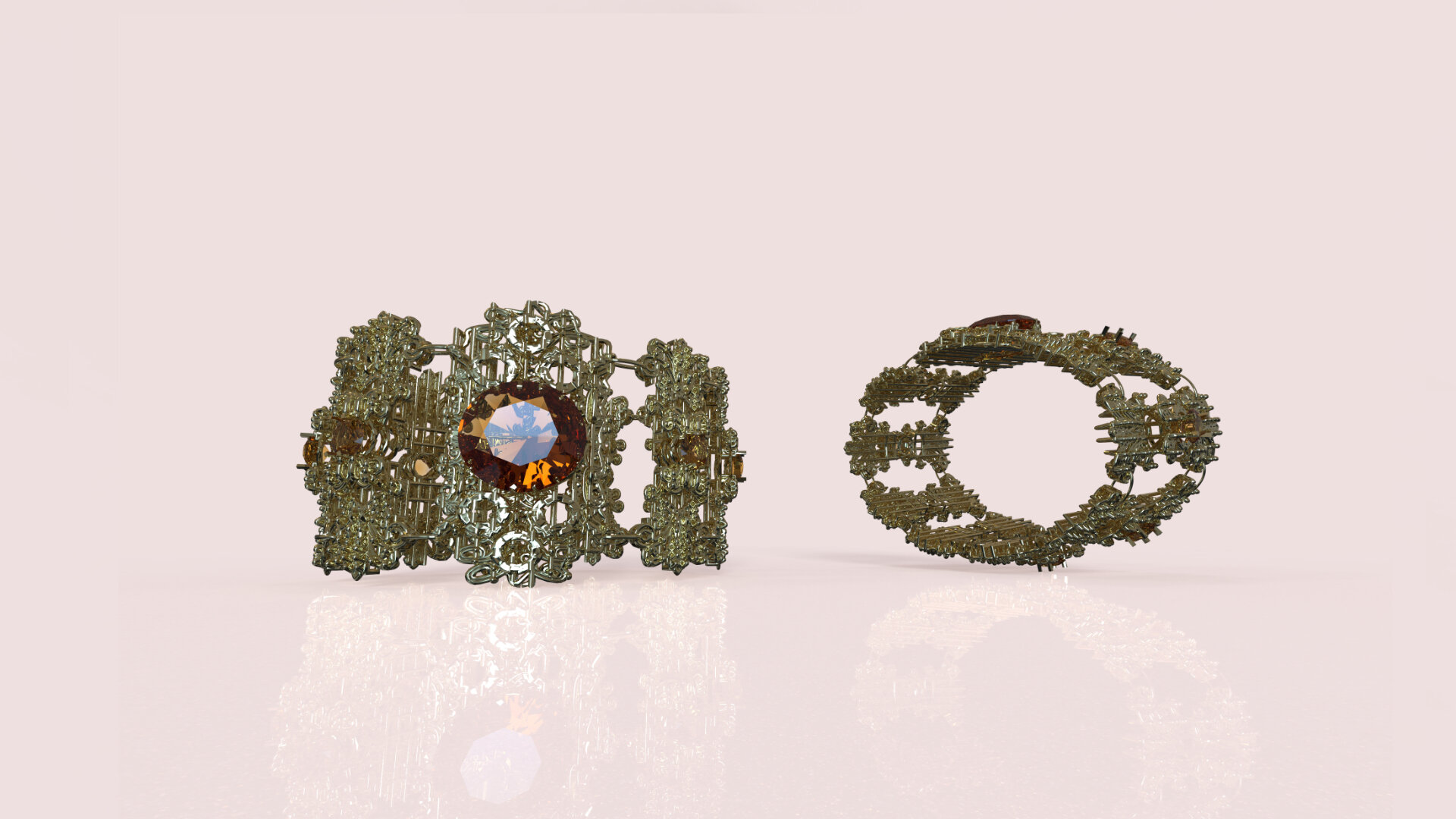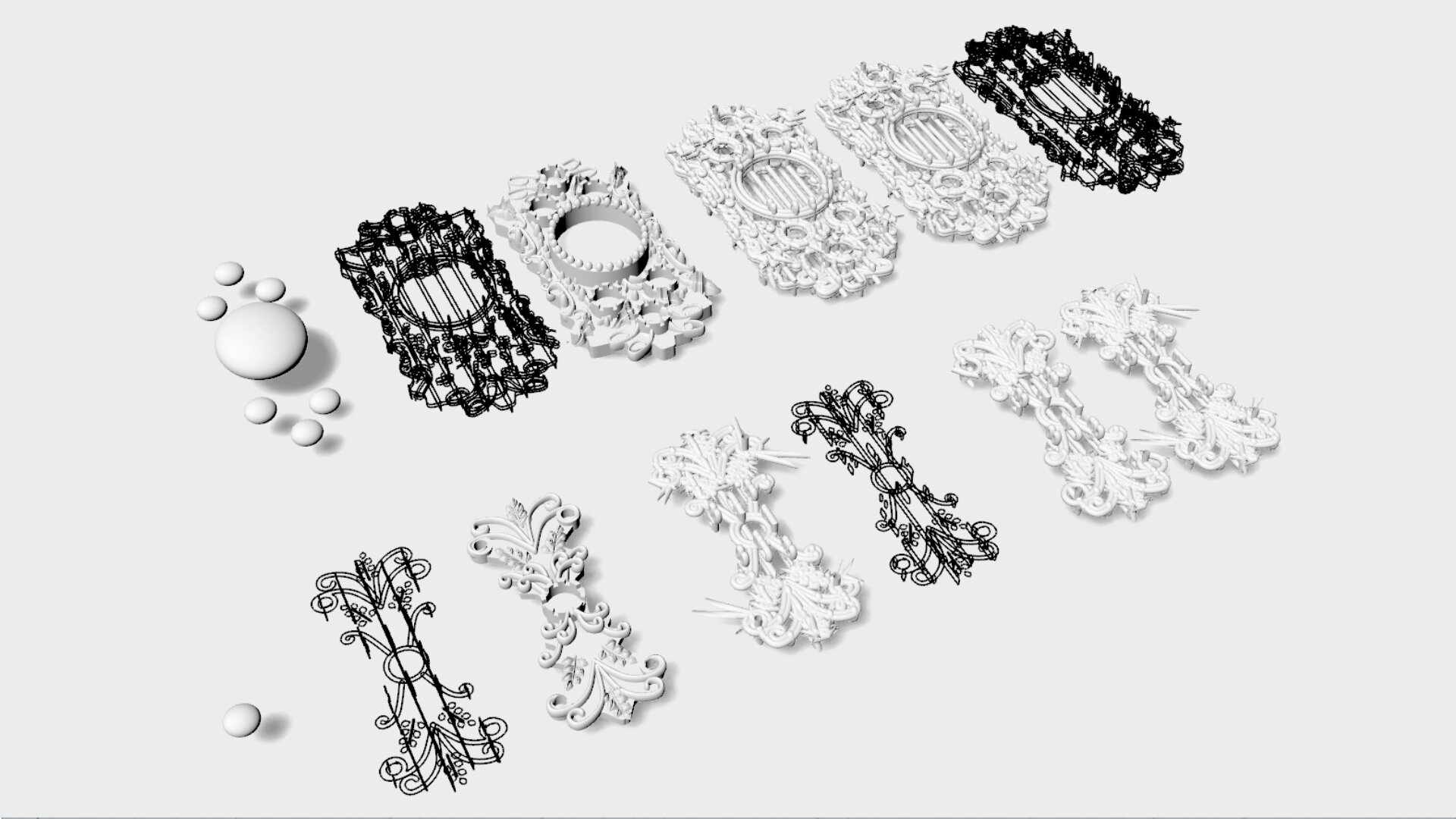PINCHBECK
History
Pinchbeck is a form of brass, an alloy of copper and zinc, mixed in proportions so that it closely resembles gold in appearance. It was invented in the 18th century by Christopher Pinchbeck, a London clockmaker. Since gold was only sold in 18-carat quality at that time, the development of pinchbeck allowed ordinary people to buy gold 'effect' jewelry on a budget.
Pinchbeck was an affordable substitute for gold, and records indicate that travelers who were at risk of robbery from highwaymen often carried jewelry and accessories made from Pinchbeck and other similar metals, rather than travel with their more expensive pieces. Pinchbeck could be worked into the same intricate designs as gold, and it retained its yellow color—other gold substitutes of that period were prone to fading. The family kept its exact formula a secret, but others guessed the alloy's two components and began to experiment with their own mixes, some more successfully than others. Pinchbeck is typically composed of copper and zinc in ratios of 89% copper to 11% zinc; or 93% copper to 7% zinc.[1]
This early Pinchbeck is very beautifully worked up and finished, some of the miniature cases and watches being designed and chased in a very masterly manner. They of course followed the general type of goldwork of the day, and the design is of the type known as Rococo. Later dishonest jewelers passed pinchbeck off as gold; over the years it came to mean a cheap and tawdry imitation of gold.[2]
It has been said that with Edward Pinchbeck's death the secret of the correct method of making it, whatever it was, died out, but metal bearing a close resemblance to it continued to be used well into the nineteenth century, in fact, until the process of electro-gilding made it easy and cheap to deposit a wash of gold on any metal as required. Brass articles with a coating of gold are often passed off as Pinchbeck, and even if they are without the gilding some dealers think "Pinchbeck" sounds better and helps to sell their stock. [3]
Pinchbeck's popularity declined in the mid-1800s, when nine karat gold (which contains 9/24 parts gold) became legal, allowing buyers to acquire jewelry made from a less expensive version of that precious metal. About the same time, electro-gilding (a plating process) was invented, adding to Pinchbeck's decline.
Original from National museum collection
BRACELET
Designed by: Unknown
Material: Pinchbeck, glas
Size 20 x 20 cm
Year: 1830-1850
Photo credit: Nationalmuseum
This bracelet made in England around the 1840 was made in the end of Pinchbecks golden era. The bracelet is made during the early Victorian ear or the Romantic period. This period was influenced by a handful of different periods: Classical, Gothic, Renaissance and even Ancient Greek and Roman mythology were incorporated into designs.[4]
Themes inspired by the Renaissance and the Middle Ages were everywhere in jewelry design and motifs from nature dominated the period. Bouquets of flowers, branches, leaves, grapes, and berries were conspicuously featured in jewelry. Symbolism associated with flowers was prominently in evidence. [5]
This bracelet is a good representation of the Victorian romantic period, it has intricate flower patterns that are surrounded by baroque shapes. The overall aesthetic of the bracelet reminds me jewelry worn by the rich and the wealthy but the materials are cheap. That makes me think that this bracelet was specially made for travelling. The stones that are used in this bracelet are red glass stones to resemble the look of a garnet or a ruby.
re-designed bracelet
RE-DESIGN
With the new professional SLA 3d-printers’ developments, the history of the 3d-printer starts in 1981, Hideo Kodama of Nagoya Municipal Industrial Research Institute published his account of a functional rapid-prototyping system using photopolymers. A solid, printed model was built up in layers, each of which corresponded to a cross-sectional slice in the model.
Three years later, in 1984, Charles Hull made 3D-printing history by inventing stereolithography. Stereolithography lets designers create 3D models using digital data, which can then be used to create a tangible object.
The key to stereolithography is a kind of acrylic-based material known as photopolymer. Hit a vat of liquid photopolymer with a UV laser beam, and the light-exposed portion will instantly turn into solid piece of plastic, molded into the shape of your 3D-model design.
3D Systems (Charles Hull’s company) created the world’s first stereolithographic apparatus (SLA) machine, which made it possible to fabricate complex parts, layer by layer, in a fraction of the time it would normally take. That same year, startup DTM produced the world’s first selective laser sintering (SLS) machine—which shoots a laser at a powder instead of a liquid.
In 1999 the first 3D-printed organ was implanted in humans. Scientists at Wake Forest Institute for Regenerative Medicine printed synthetic scaffolds of a human bladder and then coated them with the cells of human patients. The newly generated tissue was then implanted into the patients, with little to no chance that their immune systems would reject them, as they were made of their own cells.
This was also the decade when 3D printing met the open-source movement. In 2005, Dr. Adrian Bowyer’s RepRap Project launched an open-source initiative to create a 3D printer that could basically build itself—or at least print most of its own parts. Its 2008 release, Darwin, is a self-replicating printer that’s able to do just that. Suddenly, people everywhere had the power to create whatever stuff they could dream up on their own
By the mid-2000s, the democratization of manufacturing had captured the public’s imagination, as had the idea of mass customization. The first SLS machine became commercially viable in 2006, which opened the door to on-demand manufacturing of industrial parts.[6] the price of 3D printers has fallen rapidly and the accuracy of 3D printing has improved. Designers are no longer limited to printing with plastic. New printers can print in silver, gold, ceramic and wax.
This project has used the wax printing to create wax models that later was cast in a pinchbeck metal. The design was based on the original bracelet design from the Swedish national museum collection. The bracelet has been divided into layers and each layer’s outline has been traced horizontally and vertically to create a line grid. Each line in the grid was given a thickness of 1 mm. This method has abstracted the baroque shapes and given the bracelet a more structured and less organic look. The straight lines and the grid are visible when the bracelet is seen from the side.
Process picture
3d-model of redesign
Footnotes
[1] http://www.worldwidewords.org/weirdwords/ww-pin1.htm
[2] Tolkien, Tracy; Wilkinson, Henrietta (1997). A Collector’s Guide to Costume Jewelry Key Styles and how to recognize them. Firefly Books. p. 33. ISBN 1552091562.
[3] https://jewelryexpert.com/articles/Pinchbeck.htm
[4] https://www.truefacet.com/guide/jewelry-style-periods/
[5] https://www.langantiques.com/university/romantic-period-1837-1860/
[6] https://redshift.autodesk.com/history-of-3d-printing/
This project was made possible with the support of



